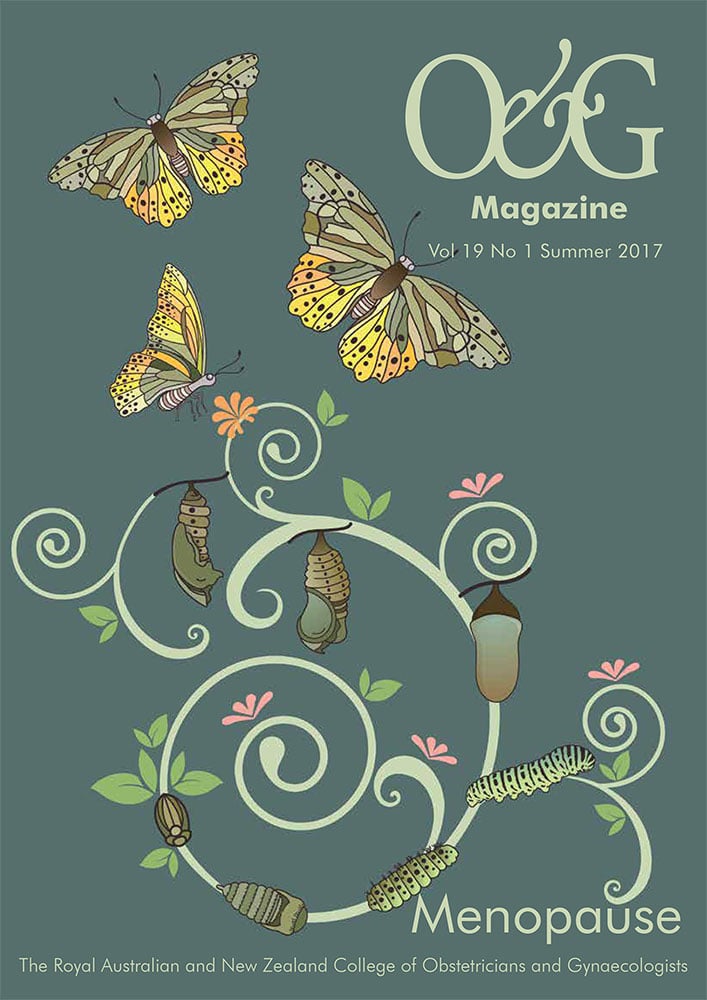The renewed National Cervical Screening Program (NCSP) will commence on 1 May 2017, when the primary human papillomavirus (HPV) screening test will become available on the Medicare Benefits Schedule (MBS).
The following answers to frequently asked questions provide information regarding the roll-out of the renewed NSCP, along with links to implementation resources.
What is changing under the renewed NCSP?
- The renewed NCSP will invite women aged 25–74 years, both HPV vaccinated and unvaccinated, to undertake a HPV test with partial genotyping and reflex liquid-based cytology every five years.
- Women of any age who have symptoms suggestive of cervical cancer such as abnormal vaginal bleeding, should have appropriate clinical assessment, which should include a co-test (HPV and LBC test).
- HPV-vaccinated women will still require cervical screening as the HPV vaccine does not protect against all the types of HPV that cause cervical cancer.
- The Register is being established to improve data collection to support the new screening program. The Register will provide national digital health infrastructure for the collection, storage, analysis and reporting of screening data and it will also send invitations and follow-up reminders to patients to participate in the screening program.
- It will be mandatory (through national legislation) for all colposcopists to provide the Register with data in accordance with a minimum dataset for every diagnostic and therapeutic interaction. There is preference for electronic reporting to the Register, but there will be provision for paper-based reporting.
- The quality of colposcopic and therapeutic assessment procedures will be regularly assessed. The Department of Health expects all colposcopists (diagnostic and therapeutic) who provide services to the NCSP to participate in a quality-assurance program. Participation in the RANZCOG Cervical Quality Improvement Program (C-QuIP) should meet that expectation.
- The MBS item number for colposcopy 35614 remains. The Department of Health are currently finalising the MBS item descriptors and fees to support the renewed NCSP.
What should I do up until 1 May 2017?
In the interim, it is very important that women continue to participate in the current two-yearly Pap test program to ensure they are not at risk of developing cervical cancer.
Why are women under 25 years of age not being screened as part of the NCSP?
- Evidence shows that cervical cancer in young women is rare.
- There is robust evidence to show that screening women younger than 25 years has not measurably changed the incidence or mortality of cervical cancer in this age group.
- HPV infections are very common in young women, are mostly transient and will usually resolve within 1–2 years.
- Significant harms of screening this age group include over-diagnosis, increased stress and anxiety associated with additional tests, unnecessary colposcopy and related treatment that is associated with a heightened risk of future preterm births.
- HPV vaccination has already been shown to reduce high-grade cervical abnormalities among women younger than 25 years of age and will continue to reduce the risk of cervical abnormalities in this age group.
- When the clinician is concerned regarding early age of sexual activity (less than 14 years of age) or sexual abuse, women between 20–25 years may undertake screening.
- This decision not to screen women under 25 is in line with recommendations from International Agency for Research in Cancer that the harms of screening outweigh the benefits in this age group.
When should I advise my patients to cease cervical screening?
- It is recommended that women between 70–74 years of age who have had a regular screening tests have an exit test before leaving the cervical screening program.
- Women older than 69 years who have never been screened or have not had regular screening tests should have a HPV test if they request screening.
Where can I access the updated Guidelines for the management of screen-detected abnormalities?
Cancer Council Australia has finalised the clinical management guidelines for the renewed NCSP Guidelines for the Management of Screen Detected Abnormalities, Screening in Specific Populations and Investigation of Abnormal Vaginal Bleeding – 2016 Guidelines. The Guidelines will be released publicly in February 2017 on Cancer Council Australia’s interactive wiki platform, which will allow them to be updated as new evidence becomes available. They will also be available as a PDF.
What is the new National Cancer Screening Register?
The Commonwealth Department of Health has appointed Telstra Health to develop and operate the new Register, which will support the renewed NCSP and the expansion of the National Bowel Cancer Screening Program. The Register will create a single record for Australians participating in cervical cancer screening, meaning for the first time, one record for each woman. By integrating the Register with GPs’ desktops, GPs will be able to identify patients’ screening eligibility and history to support real time clinical decision-making. All health professionals, including pathology providers, will have improved access to their patients’ information through the Register.
The Register will be established under national legislation and the data included in the register will be owned by the Commonwealth Department of Health and cannot be used for any other purpose. Any misuse of data could be an offence under the Criminal Code. All data is subject to privacy laws such that only personal information that is directly related to the Register may be collected, used and disclosed.
How does the Register affect my practice?
The National Cancer Screening Register Bill 2016 and the National Cancer Screening Register (Consequential and Transitional Provisions) Bill 2016 were passed in October 2016. These Bills mandated the reporting of pathology results to the register as well as colposcopy outcomes.
It will be mandatory (through national legislation) for all colposcopists to provide the Register with data in accordance with a minimum data set for every diagnostic and therapeutic interaction. There is a preference for electronic reporting to the Register, but there will be provision for paper-based reporting.
The quality of colposcopic and therapeutic assessment procedures will be regularly assessed. The Department of Health expects all colposcopists (diagnostic and therapeutic) who provide services to the NCSP to participate in a quality assurance program. Participation in C-QuIP should meet that expectation.
The Department of Health is currently finalising the MBS item descriptors and fees to support the renewed NCSP.
I’ve heard that patients can opt into self-collection: what does this mean?
International studies show that HPV self-sampling increases screening participation rate for under-screeners and those that have never been screened. Self-collection will be an alternative only available to under-screeners or those that have never been screened. HPV self-collection is not as effective as a health professional collected sample, but it is more effective than the current Pap test or no testing at all. Self-collection is less cost effective than the mainstream pathway and will not be broadly encouraged. It is expected to be an important opportunity to increase screening rates in women from rural and remote areas and Aboriginal and Torres Strait Islander women. If self-collection returns a HPV-positive test, a cervical sample for liquid-based cytology must be collected.
Why is cervical cancer screening changing?
In Australia, Pap tests and an organised approach to screening have already halved the incidence and mortality of cervical cancer. While the success of the current NCSP cannot be disputed, the environment in which the program operates has changed. Therefore, in 2011, the Commonwealth Department of Health undertook a review of the cervical screening program (the Renewal).
The aim of the Renewal was to ensure that all Australian women, HPV vaccinated and unvaccinated, have access to a cervical screening program that is acceptable, effective, efficient and based on current evidence. To achieve this, the Department of Health:
- assessed the evidence for screening tests and pathways, the screening interval, age range and commencement for both HPV-vaccinated and non-vaccinated women
- determined a cost-effective screening pathway and program model
investigated options for improved national data collection systems and registry functions to enable policy, planning, service delivery and quality management - assessed the feasibility and acceptability of the renewed program for women.
Since the introduction of the NCSP in 1991, new evidence has emerged about the optimal screening age range and interval, the HPV vaccine has become available and there have been developments in new technologies for the early detection of cervical cancer.
How were the new recommendations developed?
- There was an assessment of evidence, modelling and evaluation of potential screening pathways, tests and intervals. Recommendations from these assessments were made by the Medical Services Advisory Committee (MSAC) in April 2014.
- The Australian Government provided funding to implement the renewed program based on MSAC’s findings as part of their 2015–16 Commonwealth budget commitment.
Further reading
Medical Services Advisory Committee recommendations. [Accessed 2 September 2016] www.cancerscreening.gov.au/internet/screening/publishing.nsf/Content/MSAC-recommendations.
Overview of the Renewal. [Accessed 2 September 2016] www.cancerscreening.gov.au/internet/screening/publishing.nsf/Content/overview-of-the-renewal.
Arbyn M, et al. Accuracy of human papillomavirus testing on self-collected versus clinician-collected samples: a meta-analysis. Lancet Oncol. 2014;15(2):172-83. AIHW. Cervical screening publications. [Accessed 2 September 2016] www.aihw.gov.au/publications/cervical-screening/.






Leave a Reply